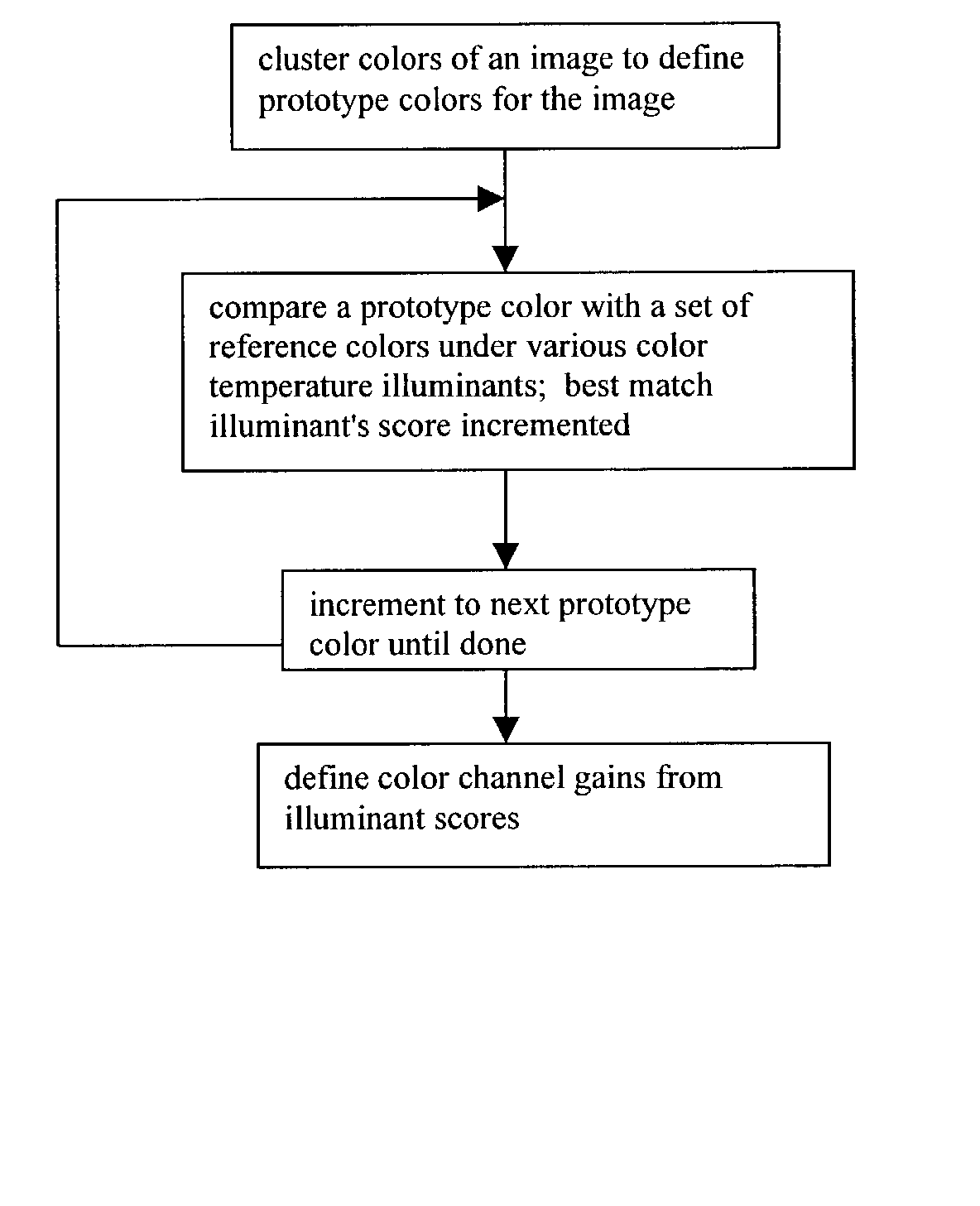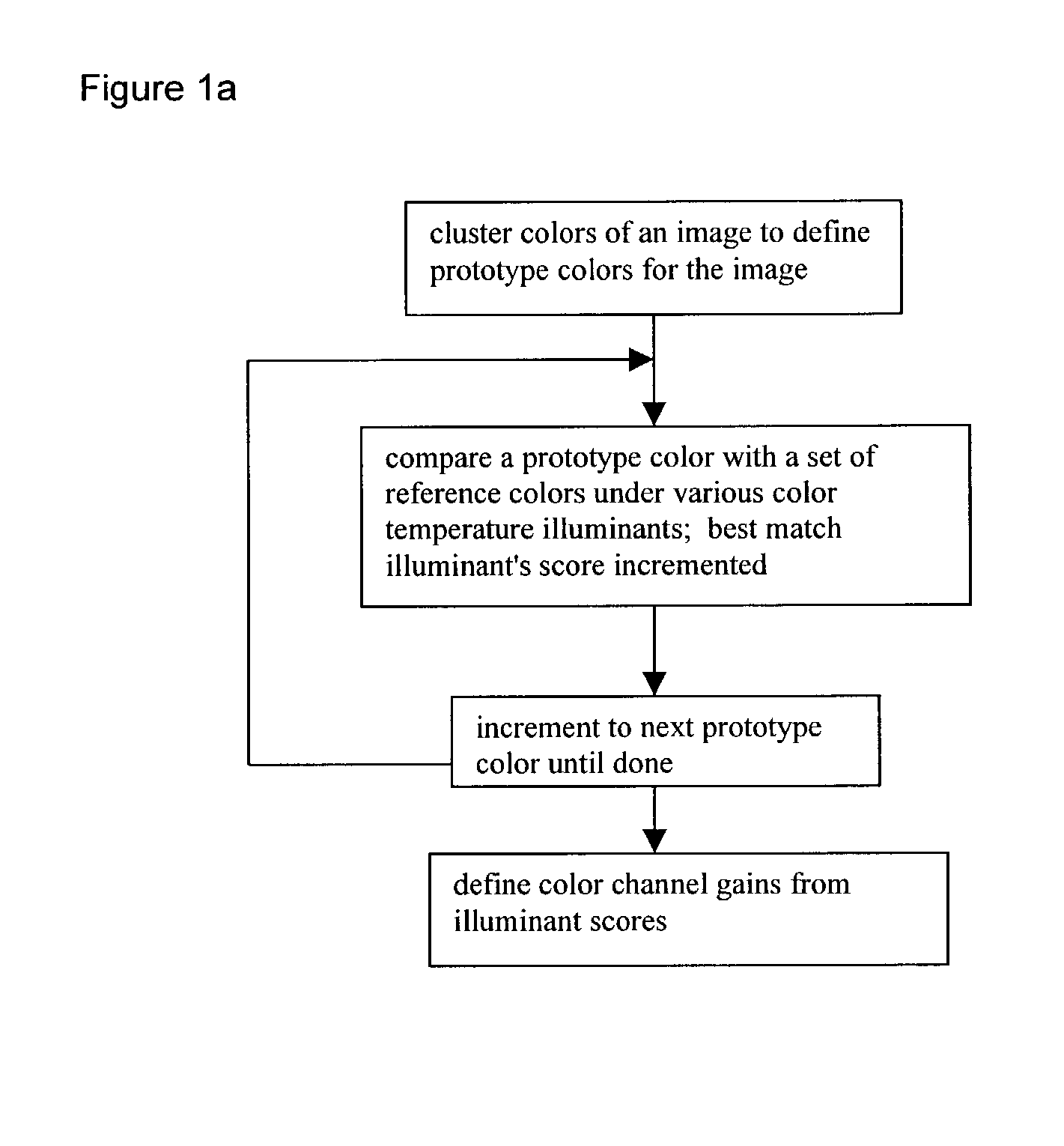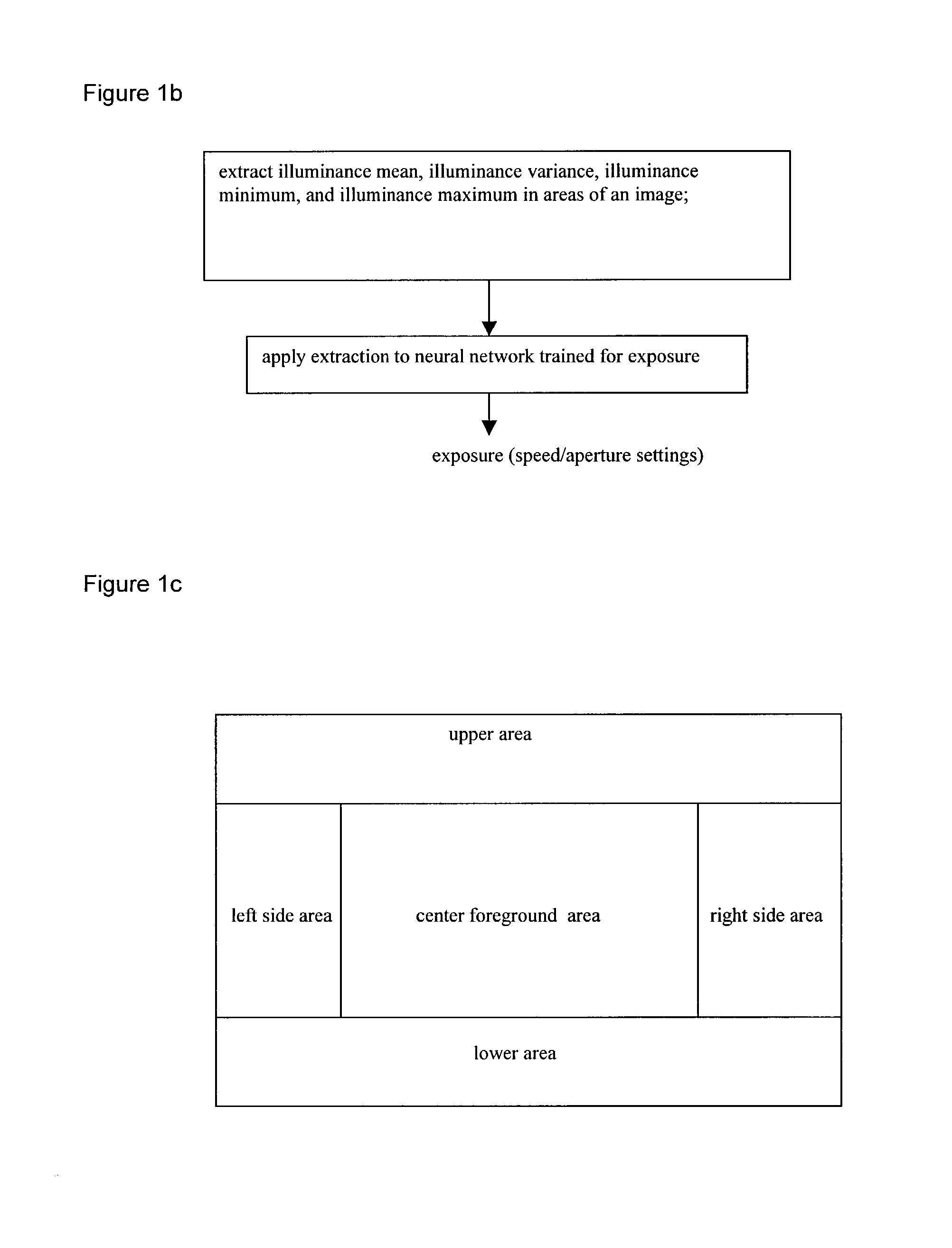Automatic white balancing via illuminant scoring autoexposure by neural network mapping
a neural network and auto-exposure technology, applied in the field of automatic white balancing of camera systems and methods, can solve the problem that white balancing circuits cannot properly compensate, and achieve the effect of minimal comparison effect and highest scor
- Summary
- Abstract
- Description
- Claims
- Application Information
AI Technical Summary
Benefits of technology
Problems solved by technology
Method used
Image
Examples
Embodiment Construction
[0051] In realistic lighting conditions, there exist slight color fluctuations over time. To provide a stable response to such color fluctuations, a temporal membership scheme is set up. This involves examining a number of frames to see which color temperature lasts the longest in time. FIG. 10 shows an example where the temporal membership preferred embodiment is used to identify the color temperature of 7500 after examining 6 frames. In particular, when an illuminant scores in a frame, then its temporal score is incremented; whereas, when an illuminant fails to score in a frame, then its temporal score is decremented. The illuminant scores saturate at 5, and the scores determine the mixture used with the color channel gains in the table of the first preferred embodiments.
[0052] 5. Autoexposure
[0053] Preferred embodiment autoexposure methods in preferred embodiment systems such as FIG. 2 use a trained neural network approach as per FIG. 1b. Exposure is the term used to refer to the...
PUM
 Login to View More
Login to View More Abstract
Description
Claims
Application Information
 Login to View More
Login to View More - R&D
- Intellectual Property
- Life Sciences
- Materials
- Tech Scout
- Unparalleled Data Quality
- Higher Quality Content
- 60% Fewer Hallucinations
Browse by: Latest US Patents, China's latest patents, Technical Efficacy Thesaurus, Application Domain, Technology Topic, Popular Technical Reports.
© 2025 PatSnap. All rights reserved.Legal|Privacy policy|Modern Slavery Act Transparency Statement|Sitemap|About US| Contact US: help@patsnap.com



